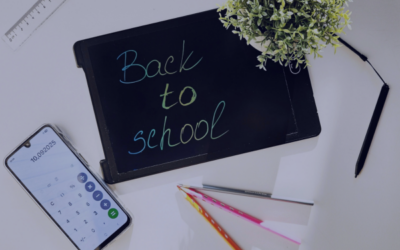Do you want to generate mass qualified traffic to your points of sale? Then drive-to-store is the strategy for you. At the heart of omnichannel challenges, it is now being adopted by many retailers looking toattract more customers. Definition, benefits, levers... We take a look at the concept of drive-to-store.
What is drive-to-store ?
The ultimate aim is to boost in-store traffic and encourage consumers to buy products or services. The drive-to-store strategy places the physical point-of-sale at the heart of the customer experience and brand communication. It creates a complementary relationship between online and offline presence. In other words, drive-to-store links stores to digital.
The concept is not reduced to a specific means of transport, location or type of device. It refers to a marketing action targeting an Internet user based on his or her geolocation data. The aim is to encourage them to visit a store, more or less quickly, and trigger a purchase. All digital levers are used to increase traffic to the brand's points of sale.
Good to know: What's the main difference between drive-to-store and web-to-store?
Targeting is different between the two strategies. The web-to-store strategy targets static consumersconsulting the web or social networks at home or in the office. Conversely, the drive-to-store focuses on customers on the move. They use their smartphones on business or personal trips. Although they differ in terms of targeting, these two techniques share the same objective: to attract consumers to the physical point of sale.
What are the advantages of drive-to-store ?
A drive-to-store strategy offers retailers multiple benefits:
- Improve their online visibility;
- Get to know consumers better by leveraging data (customer knowledge);
- Increase in-store sales;
- Save money. drive-to-store is less expensive than other solutions;
- Provide services and offers tailored to real customer needs. The result? Improved user experience (UX);
- Growing market share;
- Expand your customer portfolio by attracting consumers who prefer to buy directly at the point of sale;
- Accelerate the conversion of digital prospects into physical customers;
- Personalize the customer experience with data ;
- Offer an original and innovative in-store experience: product testing, personalized advice, gifts, etc. ;
- Responding to consumers' need for immediacy;
- Strengthen the relationship of trust with the brand.
How do you drive to store?
The key to launching a drive-to-store campaign is gathering location data. There are three main ways to collect this data:
- Either through the SDK, via in-app tracking. The advantage of in-app tracking is that data is transmitted at regular intervals. All this, 24 hours a day, 7 days a week. The result is more precise geolocation. However, this SDK must be linked to a mobile application. Beware: it consumes a significant amount of battery power on the target's cell phone.
- Or by using Bid Request. This real-time bidding technology is a less intrusive way of collecting geolocation data. Bid Request makes it possible to target prospects around a point of sale according to predefined criteria.
- Or via advertising targeting data or third-party data. Collected, analyzed and then offered by third parties, they include information such as geographic location.
Once your targets have been geolocated, the aim is to reach the right audience with the right message:
- Within the catchment areas of the stores where the brand is distributed;
- At the right time ;
- On the right support ;
- At the right price.
Good to know: How to evaluate the effectiveness of a drive-to-store campaign?
To streamline your campaigns, you can measure :
- The uplift of purchases generated (CRM, unique promotional code) ;
- Recorded calls to your points of sale ;
- Uplift in store visits.
Examples of winning strategies drive-to-store
E-mail marketing campaigns
Discover the 4 key steps to setting up an effective e-mailing campaign:
- Targeting;
- Defining a clear offer;
- Page layout ;
- Insert a promo code, QR code, barcode, useful for tracking conversions.
Would you like us to help you deploy your e-mailing campaign? Dataventure offers a results-driven emailing solution. It gives you access to exclusive opt-in databases:
- The Dataventure group's databases, with 100 million active opt-in profiles;
- And a network of +1000 partners in Data & Performance Marketing.
CSV, FTP deposit, webservice... With Dataventure, tracking management and lead delivery are tailored to your needs. To give you total control over your acquisition model, our experts will guide you towards the best business model: CPC CPL , CPM, CPV, CPCL, hybrid. Because the success of your e-mailing campaign depends on the creation of striking visuals, our agency includes an in-house studio. It handles the design, integration and hosting of your advertising visuals.
Location-based advertising
Location-based advertising is a powerful tool for targeting Internet users in a specific catchment area. It uses various channels such as social networks, Google and database rental. Most of the time, it takes the form of an advertising banner displayed on the smartphone, corresponding to consumers' centers of interest.
SMS for local and drive-to-store
SMS is an effective communication tool for promoting local offers and stimulating drive-to-store. By sending targeted messages to customers in a specific geographical area, companies can inform them of current promotions, special events or the arrival of new products in their nearest store.
SMS offers high visibility, as it is often opened and read quickly by recipients. What's more, it enables in-depth personalization, by using the customer's first name, proposing special offers tailored to their preferences or inviting them to exclusive events in the local store.
Couponing
Couponing involves distributing gift cards or vouchers online, to be used in-store only. These coupons encourage customers to come into the store to take advantage of them. This method is particularly effective for two purposes:
1. Build customer loyalty: By offering exclusive discounts or benefits, couponing encourages existing customers to continue patronizing the outlet. Coupons can be personalized according to each customer's preferences and buying habits, reinforcing the relationship with the brand.
2. Increase the number of visitors to the point of sale: Coupons are an attractive way of attracting new customers by offering incentives to visit the physical store. They can be distributed via online channels such as social networks, e-mail or mobile applications, encouraging consumers to make an in-store purchase to take advantage of the offer.
Digital catalogs
To reinforce the impact of drive-to-store, couponing and digital catalogs can be used in a complementary way. Coupons can be sent via SMS, offering a special discount or a free gift to be used in-store. Digital catalogs, meanwhile, enable customers to view current offers, featured products and ongoing promotions directly on their smartphones, encouraging them to visit the store to take advantage of these exclusive offers.
Geofencing
Geofencing is based on sending geolocated push notifications to prospects if they are located within a precise perimeter, close to the store. These notifications are sent via a mobile application or SMS to arouse consumer interest. The aim is to make them want to come into the store.
Beacon
It's a Bluetooth box that can communicate with smartphones within a given perimeter. To be able to send promotions, several criteria must be met:
- Customers have activated Bluetooth on their smartphones;
- They downloaded the company's application;
- They are within the defined geographical area.
Click & collect
This solution enables customers to order products in just a few clicks, then collect them from a point of sale near their home. Sales staff are on hand to help customers with any queries they may have. For example, if the product does not fully meet their expectations, they can be redirected to a more suitable and/or complementary product that may be of interest.
The technique is used to maintain contact with consumers throughout their purchasing journey. It improves customer satisfaction and boosts loyalty.
Store locator
This tool meets the new needs of Internet users. It enables them to find the store nearest to them, using geolocation. The store locator is integrated into the brand's website. Information is updated in real time. Conversion tools can be added: online appointment booking, quotation requests, etc.
Local SEO
It is primarily based on the Google Business Profile. To help users find your stores, you can rely on :
- Location components: add information such as address, route or distance to travel.
- In-store conversions: tracking these allows us to understand how ads impact traffic at the point of sale.
SMS campaign drive-to-store
Dataventure offers a rich SMS customer acquisition strategy. It's a high-performance solution for rapidly reaching your prospects and customers. Theapproach is geo-targeted: catchment areas, IRIS (homogeneous, stable over time), INSEE, postal codes. Use cases include special events, local promotions, new store openings, etc.
drive-to-store is a a crucial strategic factor for stores and networks. With a well-established strategy, you can increase traffic and, consequently, your sales. The advantage of drive-to-store ? You can choose between free tools, such as the Google store listing, and paid tools, such as geolocation advertising.
Need assistance with implementing your drive-to-store campaigns? Contact the experts in custom acquisition campaigns at Dataventure


